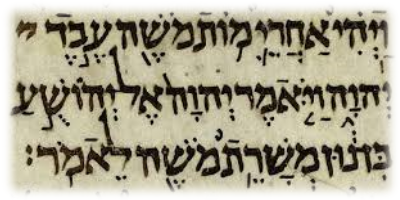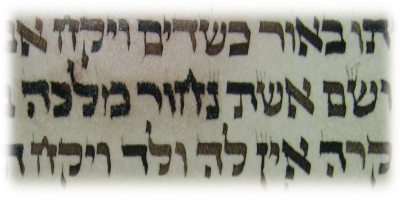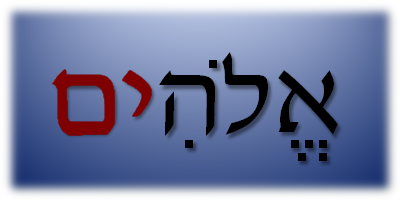Child Roots
Of the twenty-two letters of the Semitic alphabet, four originally doubled as a consonant and a vowel and are called "weak" consonants. These four are the  (A),
(A),  (H, E),
(H, E),  (W, O, and U) and
(W, O, and U) and  (Y, I). The remaining eighteen consonants are called "strong consonants".
(Y, I). The remaining eighteen consonants are called "strong consonants".
A Child Root is formed by adding one of the consonant/vowels to the front, middle or end of the Parent Root. All the Child Roots formed from one Parent Root are directly related in meaning to the Parent Root.
From the parent root 














Below are the Child Roots formed from the Parent Root 

   |
ABaL | wilt: a flowing away of life | ||
   |
HaBaL | empty: flowing out of contents | ||
   |
BaHaL | panic: a flowing of the insides | ||
   |
BaLaH | aged: a flowing away of youth | ||
   |
BUL | flood: a heavy flowing of water | ||
   |
YaBaL | stream: a flowing of water |
Adopted Roots
An adopted root is a three consonant root consisting of three strong consonants. These roots are not part of the original parent/child root system of the Semitic language but were evolved out of it over time or were introduced from a non-Semitic language.
The following adopted roots were formed by adding another strong consonant to the parent root 

   |
PaRaCh | break forth | ||
   |
PaRaK | break apart | ||
   |
PaRaS | break in pieces | ||
   |
PaRaQ | break off | ||
   |
PaRaTs | break open |
Reconstruction of Roots
By comparing the various aspects of a parent root, the original meaning of the parent can be determined. For example, the two child roots 









 and
and  , we find the original meaning. The
, we find the original meaning. The  is a picture of water and the
is a picture of water and the  is a picture of the sun at the horizon representing the gathering or condensing of light. When we combine the meaning of these two letters we have "water condensed". When the water of a pond condenses, such as dries up, the vegetation and fish that lived in that water die and begin to rot and stink. We know have a picture which will help us better understand the meaning of these words. One additional piece to the puzzle is the adopted root
is a picture of the sun at the horizon representing the gathering or condensing of light. When we combine the meaning of these two letters we have "water condensed". When the water of a pond condenses, such as dries up, the vegetation and fish that lived in that water die and begin to rot and stink. We know have a picture which will help us better understand the meaning of these words. One additional piece to the puzzle is the adopted root 


Many times, the adopted roots alone can help to reconstruct the meaning of a Parent root. The original meaning of the parent root 










   |
TaBaHh | Slaughter | ||
   |
ZaBaHh | Slaughter | ||
   |
BaHhaR | Choose (through the idea of choosing a sacrifice) | ||
   |
BaHhaN | Test (through the idea of testing for the choicest) | ||
   |
BaKaR | Firstborn (the firstborn of the flock is chosen for sacrifice) [Note: The letter  has been exchanged for the similar sounding has been exchanged for the similar sounding  ] ] |

Like what you’re discovering? Continue the journey from Bible reader to translator.
|






